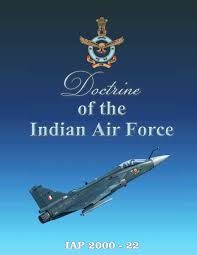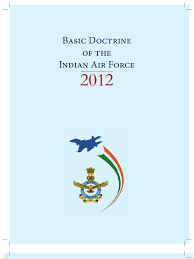
Doctrine. A doctrine is a body of principles, beliefs, statements of policy, and teachings. From a military standpoint, a doctrine defines what a Service is all about, from its structures, war-fighting principles, and the way it conducts business.
Strategy. Strategy refers to the overarching plan or approach that is developed to achieve a particular objective. It involves making decisions about how resources will be allocated, which objectives will be pursued, and what overall approach will be taken. Strategy is typically developed at the highest levels of command and is focused on achieving long-term goals.
Tactics. Tactics, on the other hand, are the specific actions that are taken to execute a strategy. Tactics involve the detailed planning and execution of specific operations or manoeuvres, such as the movement of troops, the use of weapons systems, or the deployment of specialized units. Tactics are typically developed by commanders at the operational or tactical level and are focused on achieving short-term goals.
Strategy vis-à-vis Tactics. In military operations, strategy and tactics are interdependent and must be carefully coordinated to achieve success. A good strategy must take into account the tactical realities on the ground, while effective tactics must be consistent with the overall strategic objectives. Effective coordination between strategic and tactical levels of command is essential for achieving success in military operations.

IAF Doctrine. IAF formulated its first doctrine in 1995. This was the basic doctrine covering air assets, tasks, and campaigns. Thereafter, the doctrine was revised in 2012 and the latest version has been released in 2022. The salient aspects of these editions are in the succeeding paragraphs.
1995 Doctrine. The IAF was the first among the three services to formulate a doctrine in 1995.
- The first IAF doctrine provided an exhaustive description of the basics of air power. It covered topics such as – the theory of war, characteristics of air power and its relationship with strategy, aspects related to prosecuting an air war, various air campaigns, and combat support operations.
- The doctrine laid emphasis on the importance of offensive air operations, the increase in technology levels, the role of combat support operations by force multipliers, and the network-centric environment.
- It stressed on modernisation of air defence and communications networks and C4I structures.

2012 Doctrine. This version of the doctrine went beyond outlining what airpower is, to establish a connection between airpower and national security. It brought out the greater role of air power in the full spectrum of national security and diplomacy. Relevant additions were as follows:
- It provided a clear vision of how it could contribute to sub-conventional operations including counter-terrorism missions.
- It brought into focus the enabling characteristics of air power such as air mobility, helicopter support for Special Forces operations, casualty evacuation, and Humanitarian Assistance and Disaster Relief (HADR).
- Aspects related to nation-building, aerial diplomacy, and perception management were also added.
- It included the strategic significance of space (and space-enabled capabilities).
- It also covered maritime air operations and how air power could be used in the maritime domain for many of its roles and functions.
- It highlighted the importance of modernisation of the Air Force’s, transport and training aircraft, helicopters, the induction of force enhancers, modern armaments and weapon systems, space-based systems, bolstering of air defence systems, information/electronic warfare abilities, secure communication set-ups, and up gradation of training facilities.
- It highlights the strategic aspect of the control of the air by suggesting that deterrence and control of the air as inextricably intertwined.
- It pointed out that the classification of an offensive air operation as ‘strategic’ is not determined by range, platform type or the weaponry used, but is determined by the objective or the purpose served.
2022 Doctrine. The major differences from the previous doctrine are as follows:
- It proposes a larger regional role for IAF, beyond territorial defence.
- The 2022 doctrine unequivocally advocates the shift from air power to aerospace power and stresses greater space exploitation for the achievement of national objectives.
- It asserts that aerospace power is the foundation for sustained surface operations.
- It recommends increased bilateral and multilateral exercises with extra-regional actors as part of military diplomacy.
- It elucidates a No War, No Peace (NWNP) strategy, based on kinetic (including punitive strikes) as well as non-kinetic responses.
- It explains how the technology has transformed core characteristics of reach, flexibility and versatility, mobility, responsiveness, offensive lethality, and trans-domain capabilities.
- It contains an exhaustive chapter on air strategy, which covers its doctrinal and structural engagement across the entire spectrum and levels of conflict, with the nations’ joint military strategy, and land and maritime strategies.
- Peace time strategy constitutes sovereignty protection, deterrence, air diplomacy, and nation-building.
- A first no-war-no-peace strategy, covers the employment of aerospace power in the continuum between peace and war, for information dominance, shaping operations, and external and internal security operations.
- The wartime strategy and the campaigns have been covered comprehensively, for the employment of aerospace power in the unique multi-domain-multi-spectrum Indian security context.
- The doctrine also elaborates on multi-domain operations, and the importance of battle-space transparency, combat networking, cyber and information warfare, electronic warfare, techno-logistics, administration and human resource management, and training, in this scenario.
Suggestions and value additions are most welcome
For regular updates, please register here
References and credits
To all the online sites and channels.
Disclaimer:
Information and data included in the blog are for educational & non-commercial purposes only and have been carefully adapted, excerpted, or edited from sources deemed reliable and accurate. All copyrighted material belongs to respective owners and is provided only for purposes of wider dissemination.
